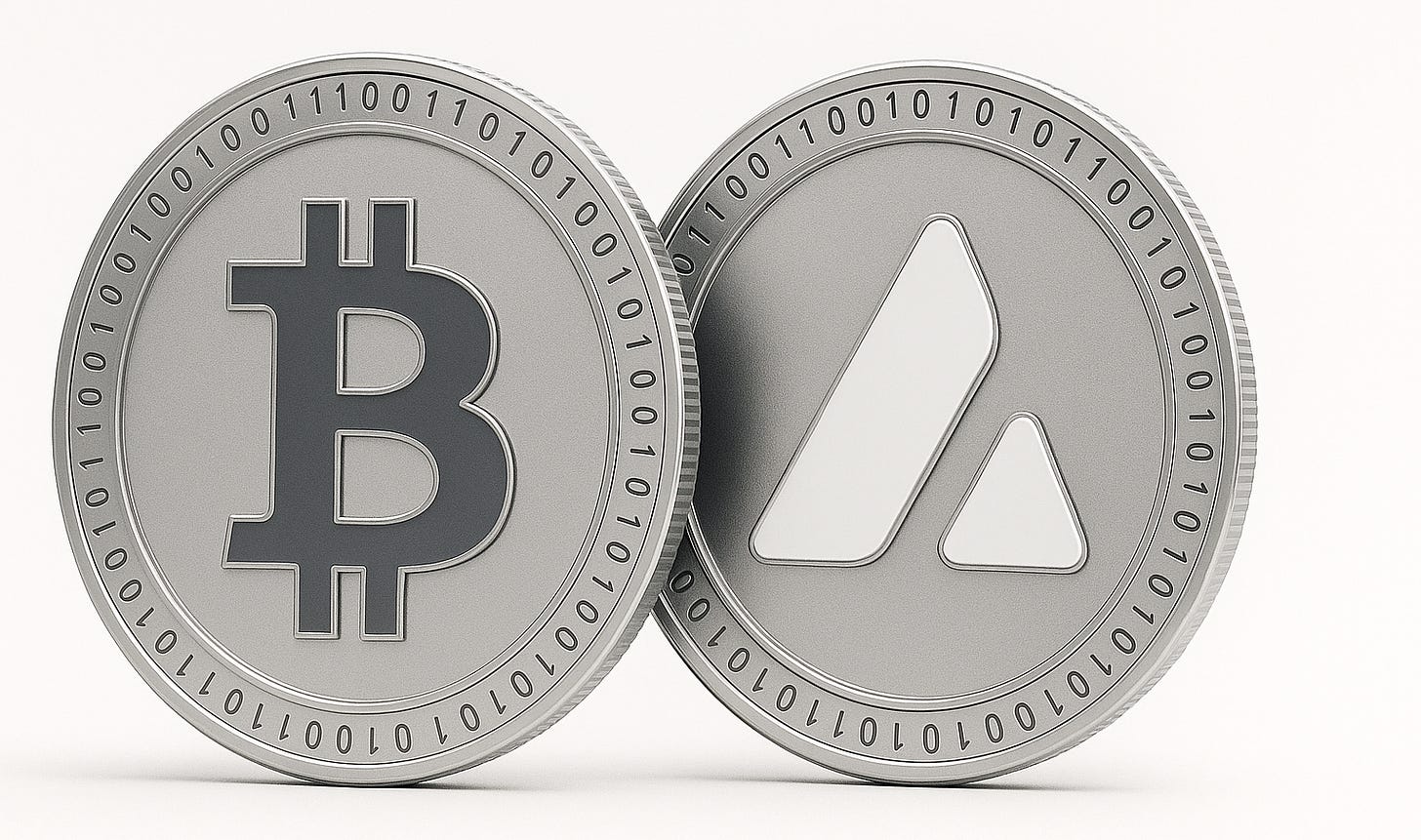BTC.b Transitions to Lombard: A New Era for Bitcoin on Avalanche
BTC.b is upgrading to Lombard’s decentralized architecture, boosting security, enabling multi-chain growth, and increasing Bitcoin liquidity in DeFi while keeping the user experience unchanged.
Liquidity is the lifeblood of every crypto ecosystem. It powers trading, lending, and yield generation and ensures assets move freely across chains. Yet, despite being the world’s most valuable digital asset, Bitcoin’s liquidity has historically been locked on centralized exchanges or siloed bridges.
BTC.b, launched on Avalanche in 2022, revolutionized Bitcoin’s role in DeFi by bringing on-chain Bitcoin liquidity, allowing users to lend, borrow, provide liquidity, or trade without giving up self-custody. Since its debut, BTC.b has become a cornerstone of the Avalanche DeFi ecosystem, with deep integrations across Aave, GMX, BENQI, and Trader Joe, and over $550 million in circulation.
Now, BTC.b is entering its next chapter with Lombard, a move that enhances its security, expands its reach, and deepens its liquidity without changing how users interact with it.
What is Lombard?
Lombard is a Bitcoin-native liquidity and infrastructure protocol that securely connects Bitcoin to the world of DeFi. It provides the architecture and governance model that allows tokenized Bitcoin assets like BTC.b and LBTC to move across different blockchains without relying on centralized custodians.
Backed by a consortium of leading institutions such as OKX, Galaxy, Kraken, Wintermute, and Figment, Lombard uses a decentralized validation system, hardware-secured key management, and real-time on-chain proof-of-reserves through Chainlink feeds to ensure transparency and trust.
In simple terms, Lombard acts as a secure bridge between Bitcoin and DeFi, enabling Bitcoin to be used on any network through a verifiable, permissionless, and non-custodial framework designed for the future of multi-chain finance.
How the Transition Affects Users
For users, the transition to Lombard is completely seamless. BTC.b remains the same token with no changes to balances, wallet addresses, integrations, or its 1:1 Bitcoin backing. Holders can continue lending, borrowing, and trading BTC.b across platforms such as Aave, GMX, BENQI, and LFJ without any disruption.
The difference lies in what’s ahead: Lombard unlocks new growth opportunities for BTC.b, including access to additional chains, deeper liquidity, expanded DeFi integrations, and a simpler path for builders to bring native Bitcoin into their applications through Lombard’s developer tools.
For protocols, contract addresses remain unchanged, but withdrawals to native Bitcoin will now be handled through Lombard’s new decentralized infrastructure and contract, replacing the old unwrap function. Standard price feeds will continue to operate as usual, while proof-of-reserve feeds will transition to Lombard-based sources once available from Chainlink.
In short, this is an infrastructure upgrade, not a token migration. The BTC.b users hold today will remain the same after the transition, just supported by a stronger and more connected ecosystem.
How BTC.b Deposits and Withdrawals Work?
Deposit Flow (BTC→BTC.b)
When you deposit Bitcoin, you send it to a secure address that’s automatically linked to your Avalanche wallet. This setup ensures your funds go exactly where they should and helps protect against errors or scams.
Once the deposit is received, Lombard’s independent security network, made up of trusted institutions, verifies and records your transaction. This means no single entity can control your funds.
To guarantee full transparency, two separate systems double-check the deposit:
One confirms that the Bitcoin was really sent.
The other verifies that the same amount of BTC.b is created on Avalanche.
After everything is confirmed, your BTC.b tokens are issued to your wallet. You can immediately use them on platforms like Aave, GMX, BENQI, or Trader Joe like any other Avalanche token.
Withdrawals (BTC.b→BTC)
When you want to move back to Bitcoin, the process simply runs in reverse. Your BTC.b is destroyed (“burned”), and the same amount of Bitcoin is sent back to your BTC wallet, all verified through the same multi-layered security checks.
Conclusion
The BTC.b transition to Lombard marks a significant milestone for Bitcoin on Avalanche and for DeFi as a whole. It combines Avalanche’s scalability with Lombard’s trust-minimized, transparent, and auditable framework to deliver a more secure, multi-chain, and accessible Bitcoin asset. BTC.b remains what it has always been, but now, it’s stronger, safer, and ready to power the next generation of decentralized finance.
Dive into the Avalanche ecosystem today! Download the Core Wallet and unlock a world of seamless DeFi, NFTs, and more.






